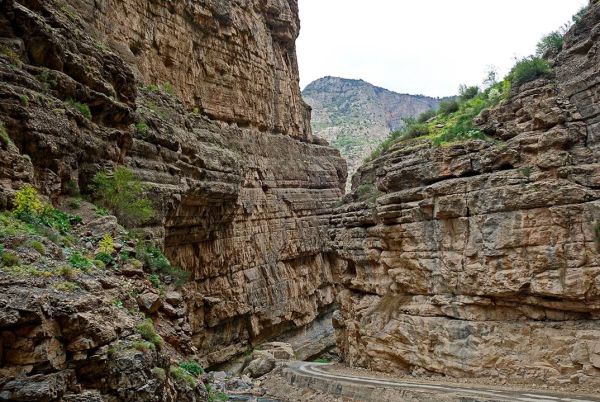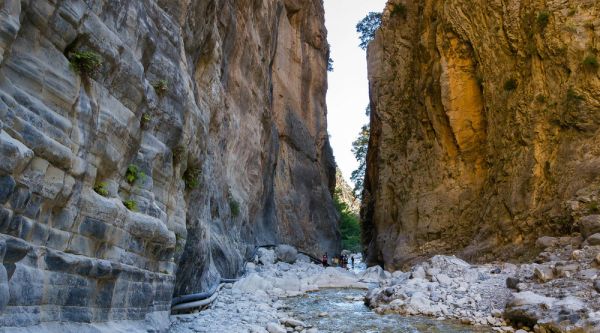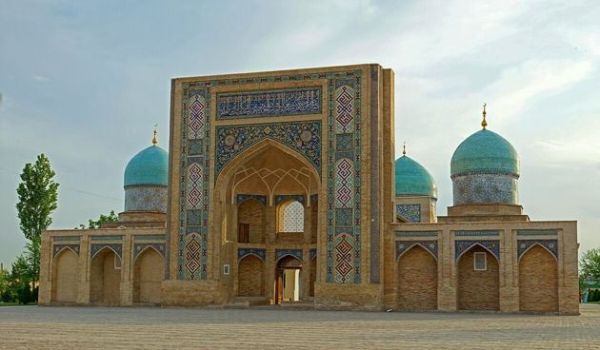Iron Gates (Sogdiana)
For several millennia now, the mysterious Surkhandarya has attracted the attention of conquerors, travelers, and explorers. The southernmost region of Uzbekistan captures with its ancient monuments, natural attractions and cultural heritage. One of the most mysterious places, perhaps, in the whole of Central Asia is the famous Iron Gate mountain pass, located in the Baysun district on the territory of the village of Derbent.
In ancient times and the Middle Ages, the pass occupied an important strategic location, as numerous merchant caravans and troops followed through it. It was the shortest route to get from Bukhara, Samarkand and Chach (Shash) to Bactria and India, and back from India and Bactria to the central cities of Central Asia. The Iron Gate has been repeatedly mentioned in written sources by Chinese, Central Asian and Arab historians and geographers.
In 630, the traveler Xuanzang described the gorge in his notes as a defensive passage covered with iron and locked with a double-leaf gate. The famous Arab geographer Al-Yaqubi talks about the 9th century city of Sogd and also mentions this passage. Another Chinese chronicle tells of a city, a temple, and an Iron Gate that got its name because of its color and iron. The Arab writer and historian Ibn Arabshah called the gate "Kagalgar", in particular, he tells in some detail about the battle of Amir Timur with Emir Hussein in this territory. Alisher Navoi mentioned the gates of Sogdiana in his two poems and Babur in his work Babur-nameh.
The Spanish diplomat and traveler Rui Gonzalez de Clavijo passed through the gate. Following a visit to Amir Timur in Transoxiana, in his "Diary of a journey to Samarkand to Timur's court" (1403-1406) he gave a detailed description of his journey through the gate:
"The next day, on Monday, we rested at the foot of a high mountain, on top of which stood a beautiful cross-shaped building, artfully made of brick, with many patterns made up of colorful tiles. This mountain is very high, but it has a passage through which you can cross it through a crevasse that seems to be made by human hands: high mountains rise on both sides, and it is flat and very deep. In the middle of this passage there is a village, and above it a high mountain is piled up. And this passageway in the mountains is called the Iron Gate, and there is no other passageway in this whole area besides this one. He protects the kingdom of Samarkand from the side of Lesser India. And there is no other way to enter the lands of Samarkand except through it; similarly, the inhabitants of the Samarkand Empire cannot enter the lands of India except through this passage. This Iron Gate is owned by Senor Tamurbek. And they bring him a lot of income every year."
In addition, Rui Gonzalez de Clavijo mentioned another Iron Gate, which was located closer to the village of Derbent. Later, academician Eduard Rtveladze concluded that the Iron Gate was the general name of a whole complex of defensive structures formed from both naturally occurring structures and artificially created ones, and they occupied the territory between the Buzgalakhan gorge and the current village of Derbent.
Historians, geologists and writers studied the gorge: Nikolai Mayev, Ivan Musketov, Olga Poslavskaya, Dmitry Logofet, Mikhail Masson. Archaeologists have excavated and discovered such monuments as ancient settlements, the foundation of a medieval caravanserai, and the defensive wall of the Kushan kingdom.
One of the most interesting conclusions made by the historian Eduard Rtveladze can be considered the conclusion about the place of refuge in this territory of Roxana's father, the wife of Alexander the Great, Oxyart. He hid in the "Sogdian Rock" during the Macedonian capture of the impregnable natural fortresses in Sogdiana. There is also an opinion that it was in Derbent that Alexander played his wedding with Roxana, the Bactrian princess. She was described as a beautiful and blooming girl, whom the commander fell in love with during a feast, when she led a round dance.












